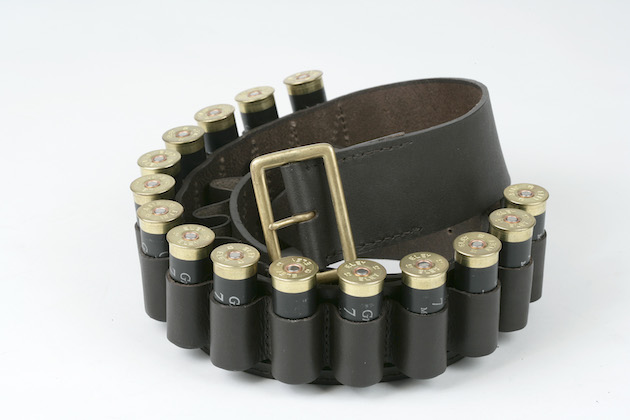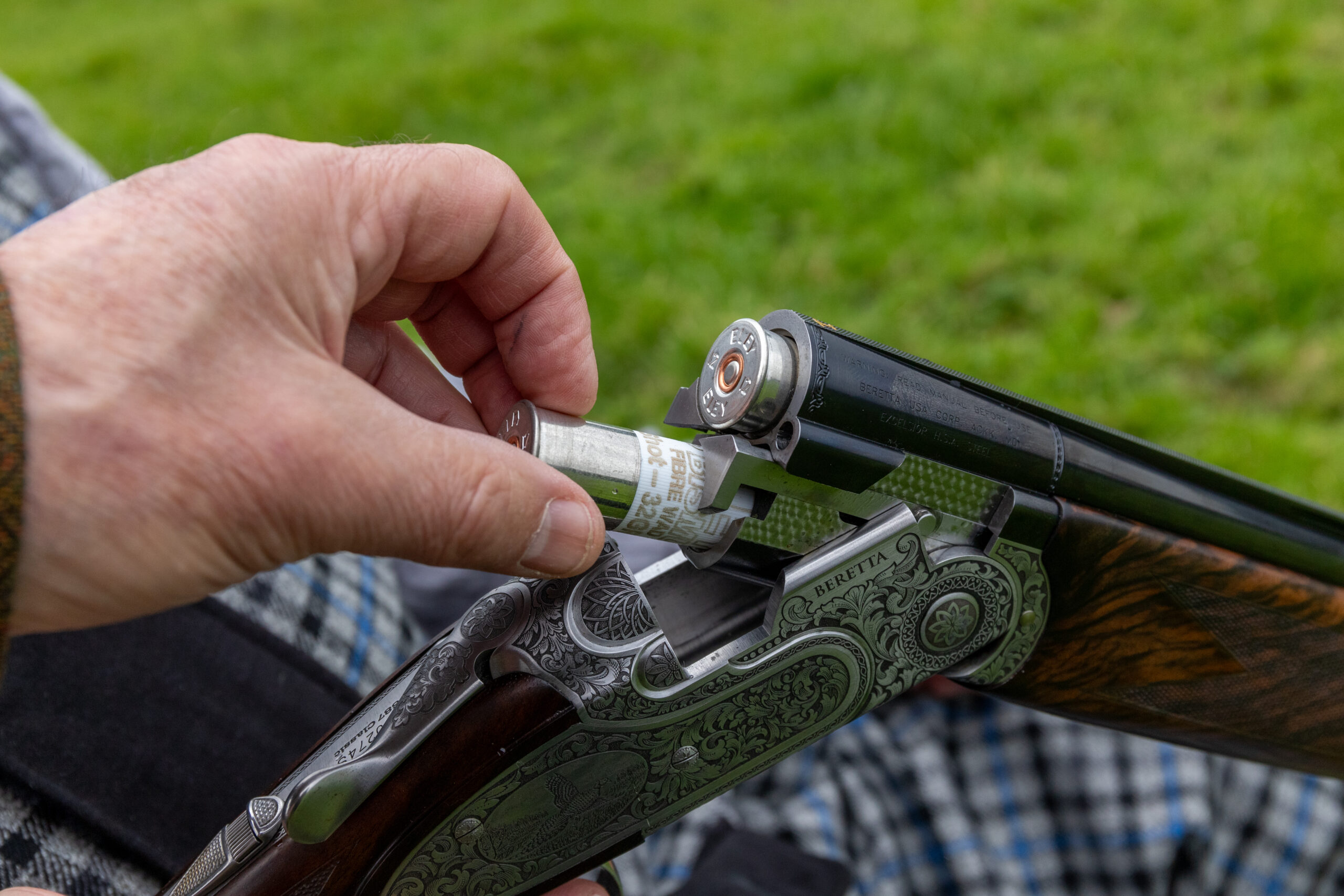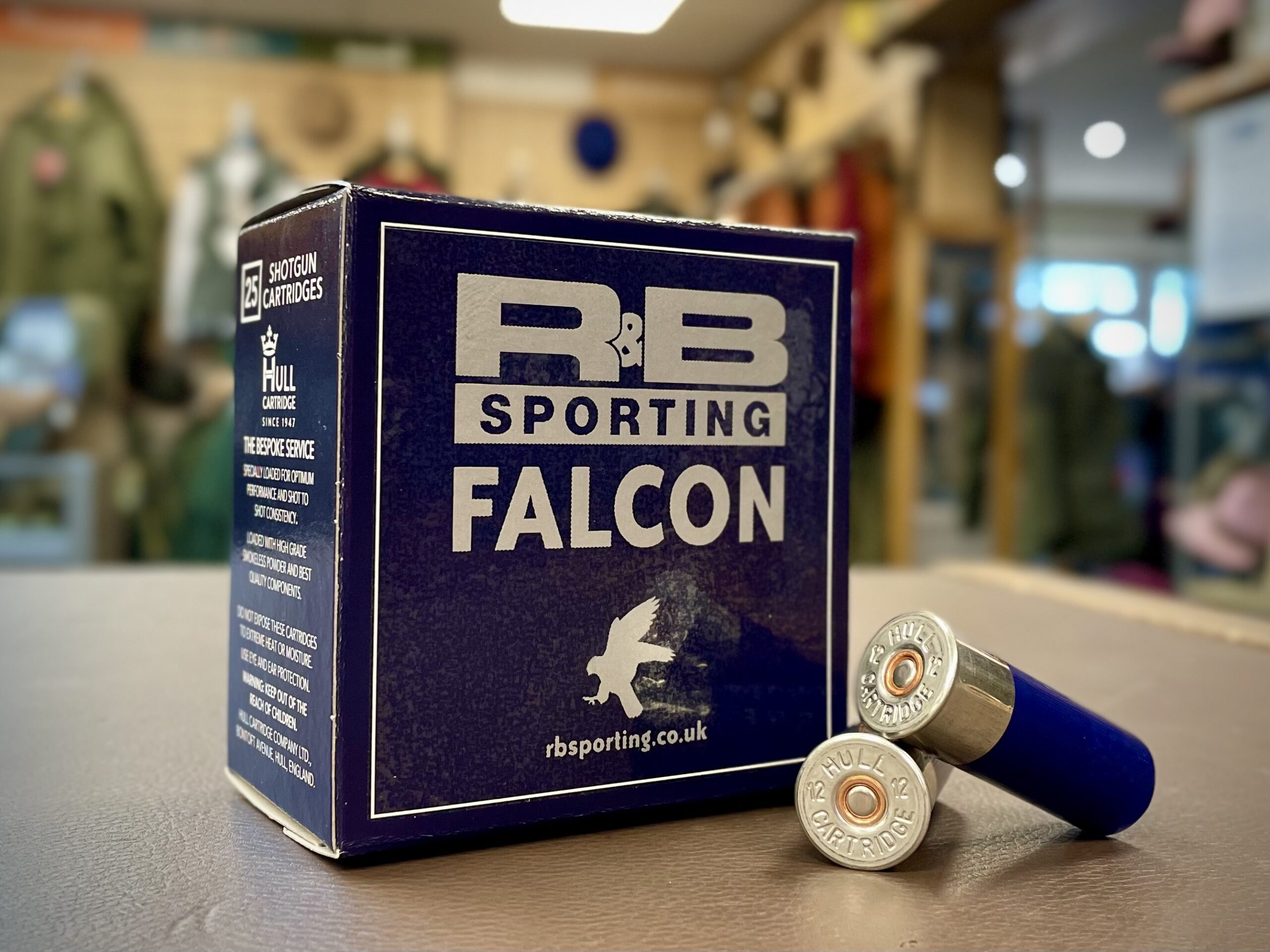How to choose the right cartridge for your shotgun
Which shotgun cartridges should you be using?

shotgun cartridges
All a shotgun cartridge has to do is propel shot towards the target to hit it cleanly. But with all the different makes and models around it can be confusing. So how can you choose the right cartridge for your shotgun?

You’ll find information on bore size, chamber length and proof rating stamped on the barrels of your gun
What you need to consider
The sort of gun you have and the quarry you’re after will dictate the cartridges you should be using. For safety your cartridge must match the bore size of your gun, its chamber length and proof rating. You can find this information stamped on the breech-end of the shotgun barrels.
To choose the right cartridge you need:
- The right calibre
- The right length for the chamber
- The right shot size for your quarry
- The right load to get the most efficient pattern at the distance you are shooting at.
Modern guns usually have a chamber length of 2¾” (70mm) or 3″ (75mm) in length, older guns a chamber length of 2½” (65mm).
Apart from the size and legal requirements, what cartridge you shoot with is up to you. Some Shots like an all-round cartridge that gives a comfortable level of recoil, accuracy and shooting style.
Once you know the right calibre and length cartridge, we can look at what is on the inside of the cartridge.
Shot load and size
The shot load is how much shot is in the cartridge and the shot size. The load is measured in grammes or ounces and refers to the total weight of the shot. The bigger the load the more recoil you are likely to feel.
Shot size refers to the diameter of the individual pellets contained in the shot load.

The 410 cartridge and the 12-bore cartridge and the different amounts of shot in each
Bigger shot size = fewer pellets
The larger the shot number, the smaller the shot. Nine is the smallest, down to 1 and then into letters with BB and SG being the largest shot available, used for vermin control and hunting larger animals. Larger shot travels further with more energy, giving a cleaner kill for larger or more distant targets.
What’s the difference between clay and game cartridges? To break the clay even at distance doesn’t require a lot of energy from the pellets. So clay shooters are more likely to use 7½s, which give approximately 395 pellets in a 28g/1oz load.
When shooting game, we require a bigger shot size to take the game more effectively, most commonly 6s having 305 pellets in a 32g/11⁄8oz load. You have to be able to pick the right size shot for the target you are shooting at and the right load to give the best pattern and perform with your gun and choke combination.
In the case of a 12-bore gun the most common loads are 28g, 30g, 32g or 36g.
From early October some Shots use 30g No.6 shot loads which generate a denser pattern and are more effective on stronger, heavily-feathered birds that have more muscle and fly higher. Then from mid-November they favour 32g of No.6 shot, again because birds are stronger and more elevated. Later in the season some favour No. 5 shot because, being 30 per cent larger than No. 6, it delivers much greater energy and generates cleaner kills, if the pattern density is sufficient.
Some Guns lean towards No. 5 shot, as the heavier pellet is more likely to kill cleanly, though there are fewer pellets in the killing pattern. Pigeon shooters sometimes prefer No. 5 shot for pigeon as there is more stopping power and penetration.
The parts of a shotgun cartridge explained
The different parts of a shotgun cartridge explained
What’s in a shotgun cartridge case?
For all the good it could do you might as well hammer the barrels into the ground and use it as…
Shooting cartridge wads – plastic and fibre
Inside the cartridge is a wad. The two most common types are plastic and fibre. More and more game and clay shoots are restricting plastic wads for environmental reasons, so find out what is acceptable beforehand.
Plastic wads can be formed to make any shape and have developed over the years: the bottom section slightly cups the propellant for a good gas-tight seal; the middle section is designed to flex as the shot is taken; the top section is formed into a cup that holds the shot all the way up the barrel, then opens up as it leaves the barrel.
The fibre wad is a biodegradable cylinder of wadding with a thin obturator (a gas check) between it and the propellant. To protect the environment use fibre wads.
Paper cases have the added benefit of not expanding in the chamber in the same way as plastic when fired, which makes them good for use in old English-style guns where weak ejector springs may be an issue.

Cross section of the Eley VIP Steel Pro eco cartridge showing the biodegradable wad
Choose the right cartridge – from one brand
Different manufacturers use different powders, with different characteristics and velocities, which will affect the amount of lead required. Sticking to one brand takes out a major variable, allowing you to focus on your shooting. So if you own both a 12 and 2-bore shotgun, use the same brand of cartridge for both. Make sure you have a plentiful supply so that you don’t run out on the day or halfway through the season. Staying loyal to one manufacturer means if you do change shot loads during the season to cope with different quarry your cartridges will still have familiar basic ballistic characteristics.
Powder, barrels and choke
With modern cartridges and powders there is no reason why most shots should be disadvantaged in any way by changing to the smaller calibre. However, if moving from a 12 bore to a 20 bore I suggest you take a trip to the clay ground to practise, before venturing into the field to take on live quarry.
It is important to realise that with the technically advanced, fast-burning powders now used in modern shotgun cartridges, barrel length does not measurably affect performance. For all practical purposes, 28″ or 30″ barrels will have equal ballistic performance, and while the former will exhibit faster handling characteristics the latter benefits from a longer sighting plane and steadier handling, which is important at longer ranges. Choke is the other big variable and the lighter the shot load you use the tighter the choke needed to maintain pattern density.

Finding the right cartridge combination for your gun is an art
Choose the right cartridge – one that’s comfortable
Technical issues aside, a cartridge must be comfortable to shoot. Felt recoil differs between shooters but don’t use a cartridge which you find ‘kicks’ back. You will flinch when pulling the trigger. Instead find a cartridge that you’re comfortable using even over a long day.
Safety rule
A note on older shotguns
The proof pressure of your gun is definitely something to check carefully if you are using an older shotgun, which tend to have shorter chambers and a lower rating. A modern shotgun with 2¾” (70mm) chambers will probably carry a proof stamp of 1,200kg and is therefore unlikely to present any issues when using standard cartridges. However, if you are thinking of using heavy/magnum loads or steel shot it is vital to check your shotgun is suitable for these. If in any doubt, consult the manufacturer or a gunsmith.
A word about recoil
Usually the heavier the gun, the better the recoil is absorbed. Side by sides generally require a lighter load of around 28-30 grams whereas over-and-unders are heavier and can take a cartridge load up to 34 grams.
Questions about shotgun cartridges
Q: How many shotgun cartridges in a slab?
There are 250 shotgun cartridges in a slab. A slab of 28 gram shotgun cartridges will weigh 7kg. It’s worth thinking about having your cartridges delivered directly to the place you are shooting, as a slab of cartridges is heavy to carry. Or shop around to see where you can buy them locally to the shoot. It’s always good to support local gunshops.
Q: Do cartridges underperform if they get cold?
A: The performance of most cartridges is slightly impaired when they get very cold. So the best place to keep them is in a cupboard in a heated room of your house. Then, on a very cold morning, they at least have a good start. In the field, I suggest you carry cartridges in your coat pockets so they don’t get really frosty-cold.
Q: How long do shotgun cartridges last?
A: If cartridges aren’t subjected to high heat or moisture they should be good for 10 years.
Q: How many shotgun cartridges can I keep at home?
A: You can store as many as you want – there is no limit. You are not obliged to lock cartridges away or store them in a gun cabinet.
- However as a responsible gun owner you must ensure that your shotgun ammunition is stored safely, securely and out of sight.
- Make sure that cartridges are not visible through a window which would show that a shotgun is likely to be on the premises.
- BASC advises you should store shotgun ammunition separately from your guns.
- Ensure cartridges are not visible to any casual visitor or through a window where they will suggest that it is likely a shotgun is stored in the property.
Q: Why are different shotgun cartridges all called JK6?
A: JK6 isn’t actually the name of these cartridges but the propellant. This means any cartridge maker can stamp the name on a case if he chooses to fill it with that particular powder. This particular propellant forms part of a range made by Bofors in Sweden. Because of its burning characteristics it’s one that loaders like to use in heavier load cartridges for high pheasants.
Q: A number of cartridges that lay forgotten all of last summer in the pocket of a damp shooting jacket have acquired some rust on the heads. Can I remove the rust, and are they safe to use?
A: That’s the problem with cartridges nowadays – the heads are not made of solid brass, but brass-plated steel. The brass plating is extremely thin, so the heads can rust quite easily, given warm, damp conditions. Rust always strikes me as being quite hard, so firing the cartridges as they are might damage the standing breech of your gun by impacting the rust into the surface. You could remove light rust with a piece of wet-and-dry abrasive paper, then wipe the heads clean with a very lightly oiled rag.
Q: Do sub-sonic cartridges make less noise? Do they kill cleanly?
A: Sub-sonic shells will reduce the noise significantly, but at only two thirds the velocity of normal cartridges will also be less effective. It’s not so much the hitting power – most shells have plenty to spare – but the fact that your lead pictures will be completely different, because they are so slow.
Q: Can you leave shotgun cartridges in the car?
A: There’s nothing to stop you leaving shotgun cartridges or blank ammunition in your car but although it’s lawful it’s not sensible.
The rules governing the storage of rifle ammunition are more strict and are the same as for the rifle itself. You are committing an offence if you leave rifle ammunition lying around where an unauthorised person can get hold of it.
It should be locked away at the time you lock the rifle up. Leaving it on the parcel shelf is illegal.

Gamebore White Gold won the top award for best clay cartridge in the Shooting Awards this year
What’s on the market
When it comes to choosing your cartridges for the pheasant season we can start with the big four British brands: Hull Cartridge, Gamebore (also from the city of Hull), Lyalvale Express and Eley. The latter two are both based in the West Midlands so the main players on the domestic market come from just two areas of the country. Hull Cartridge is run by the Bontoft family. In the last few years they have brought in a number of successful new loads and the High Pheasant Extreme with a nickel plated head is specifically designed for high birds. The High Pheasant fibre wad is another top cartridge for pheasants in any part of the country and the Imperial Game remains an excellent shell for any game shooting.
The Black Gold game load from Gamebore is a high performance shell powered by F2 powder technology and Gamebore’s Diamond Shot to hold patterns tighter at long range. Black Gold Dark Storm is an extension of the Black Gold label and it combines precision made Diamond lead shot with F2 powders to deliver impressive patterns and performance without excessive recoil.
The Supreme Game from Lyalvale Express has a true 65mm case suitable for Best English Guns with 2 ½” chambers. The high brass cap is tempered to ensure perfect ejection in any conditions. The lead used in the Supreme Game cartridges is formulated specifically for game shooting.
The Eley Hawk VIP Game cartridge comes in 28, 30 and 32gram load in both fibre and photodegradeable wad. The Classic Game paper case cartridges have copper coated shot, PSB+ powders and paper cases that are dipped and coated in pegamoid lacquer for a superb finish and practical waterproofing. And the Zenith has copper plated shot to deliver outstanding performance. Copper plated shot increases the impact power of the shot on the quarry. Last year Eley launched the Eley VIP Steel Pro Eco wad cartridges with a non-plastic wad that is harmless to the environment.
The choice of cartridge for pheasant shooting is not limited to just the big four however and other popular names are RC, Rio, EJ Churchill Hellfire, Viri FOB, Fiocchi, Rottweil and Just Cartridges Extreme Game. The RC Sipe and JK6 loads are particularly popular among some specialist high birds shooters.










